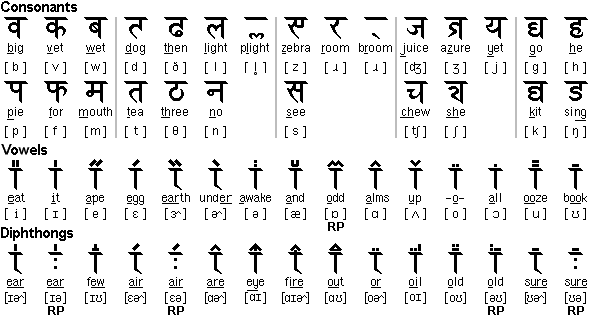Enganagri alphabet

The Enganagri alphabet was invented by David Kelley as an alternative
alphabet for English. It was modelled on the Devanagari
alphabet with influence from the Korean alphabet.
There are a number of different ways of writing English with Enganagri.
The main difference between them is in the representation of vowels and
diphthongs.
The version below is the comprehensive form, which was developed to
represent all the sounds of the English language, including both Standard
American and British Received pronunciation. The vowels, here, attempt to
replicate English speech rather than English spelling. The example text
represents the pronunciation of Standard American.
Notable features
- Type of script: alphabet
- Direction of writing: left to right in horizontal lines
- Used to write: English (Standard American or British RP)
The Enganagri alphabet

Notes
- The vowel diacritics are written over the consonant which follows them.
If vowels appear at the end of a word, the diacritics are written over the
vowel carrier (as above). The vowel carrier changes, in the case of non-rhoticized
British RP vowels, to a larger version of the symbol for “schwa”. The larger
version can also be used in the case of words ending in simple “schwa”. - Consonantal r has two forms: a full-sized form that is used to represent
a single sound, and a smaller version that is attached to the base of other
consonants when there is a consonant cluster. This is also attached to the
vowel carrier in Standard American, to show the presence of that sound
(in contrast to its absence in British RP words). - Consonantal l has two forms: a full-sized form that is used to represent
a single sound, and a smaller version that is attached to the base of
other consonants when there is a consonant cluster.
Sample text

Transliteration
All human beings are born free and equal in dignity and rights. They
are endowed with reason and conscience and should act towards one another
in a spirit of brotherhood.
(Article 1 of the Universal Declaration of Human Rights)
